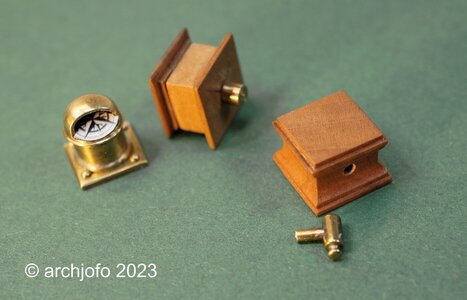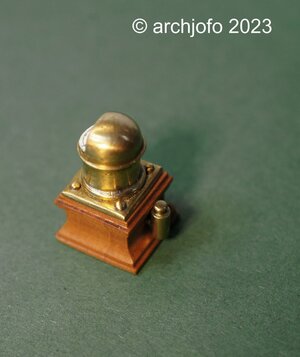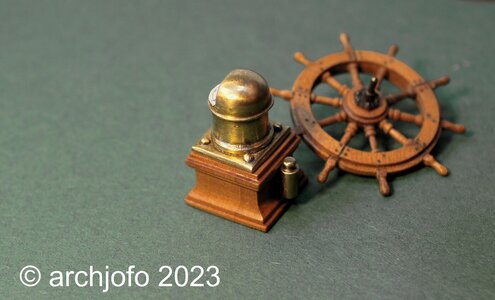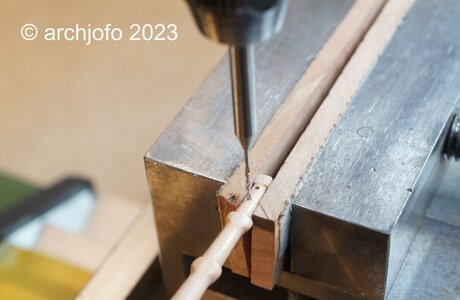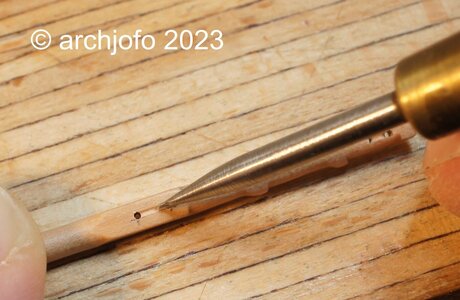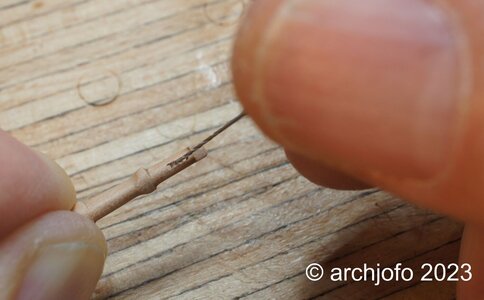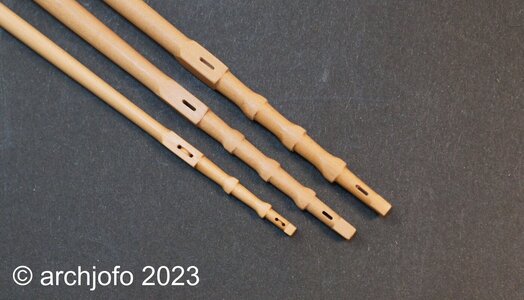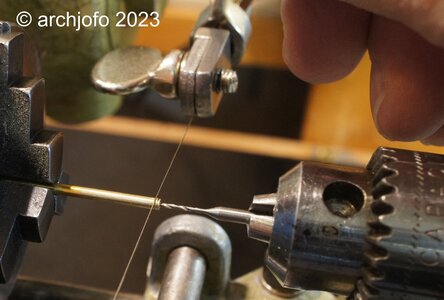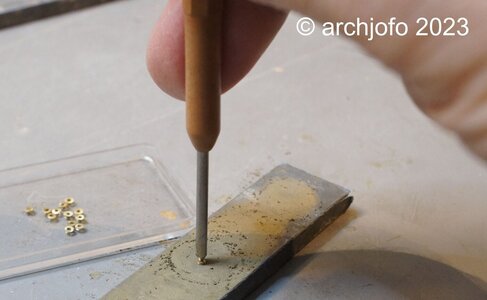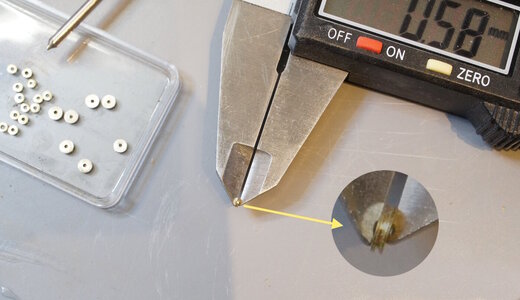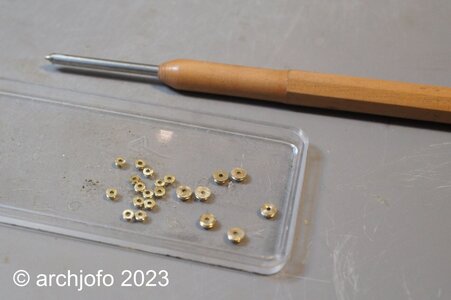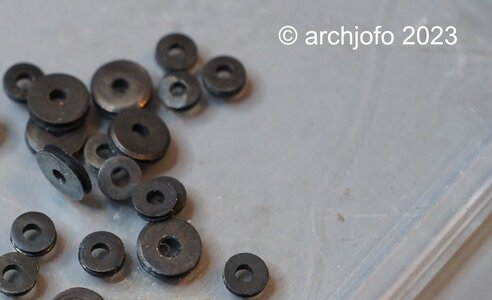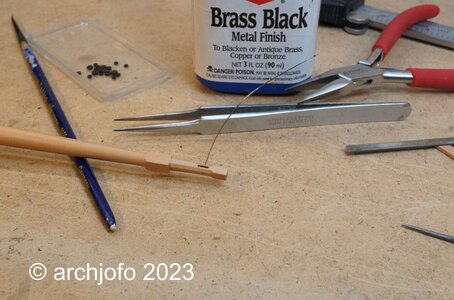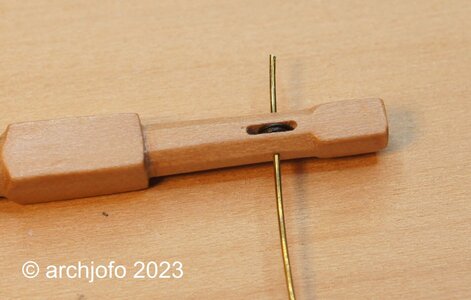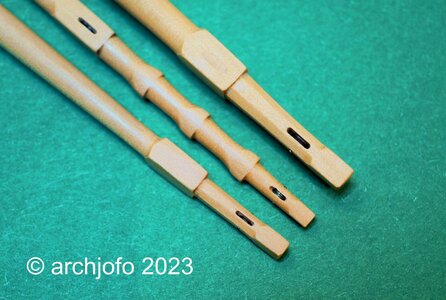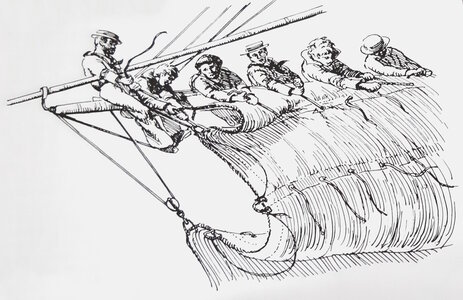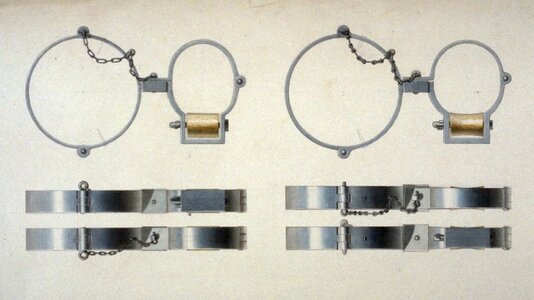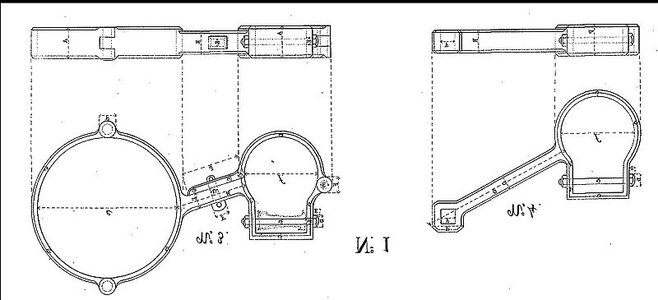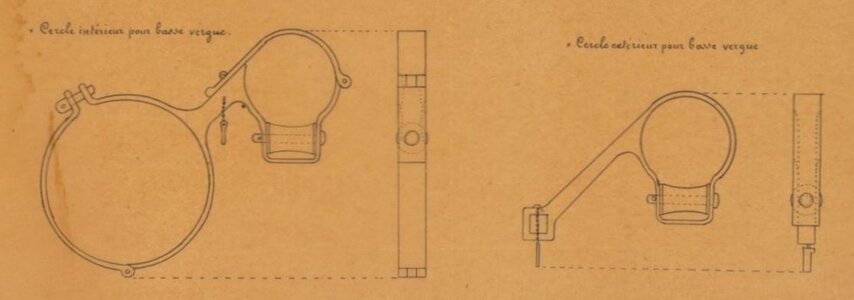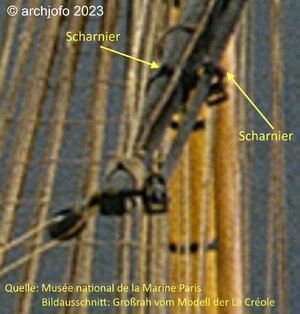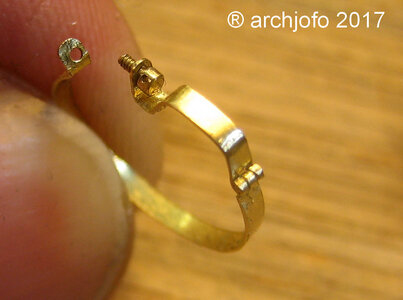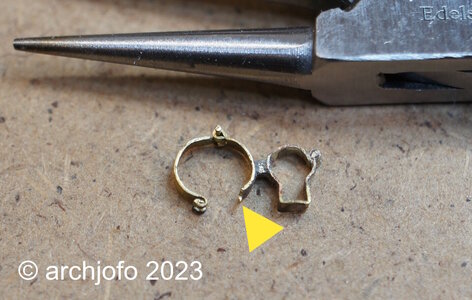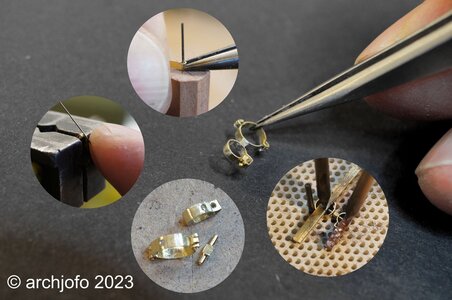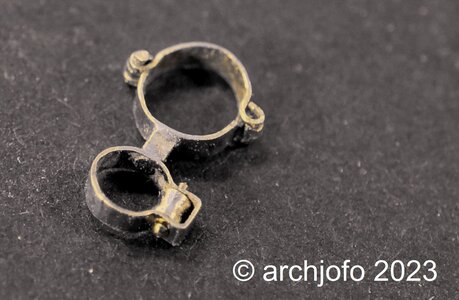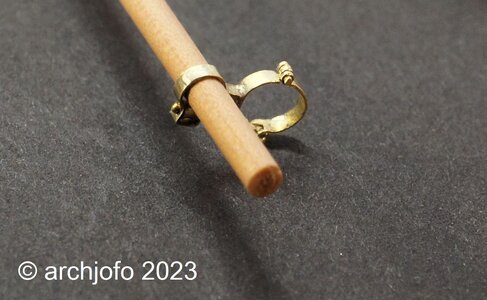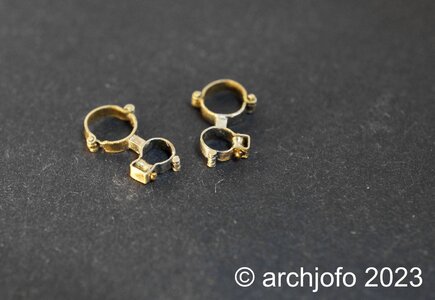- Joined
- Nov 10, 2019
- Messages
- 469
- Points
- 373

@Peter Voogt
Hi Peter,
thank you for your nice comment. That's good for my motivation.
Completion: Yards and spars
With the production of the lower studding sail booms, which are attached to the fore-channels, I could finish the chapter yards/spars for my corvette.
So I had to show all the spars in their entirety, as you can see below:
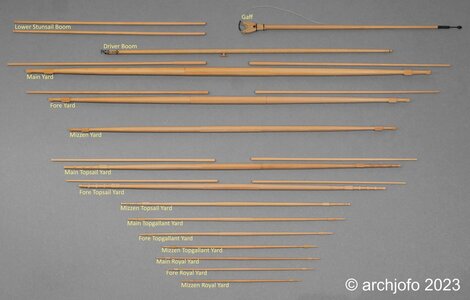
This completes the woodwork on this model except for more blocks and a few odds and ends.
I am currently researching the studding sail boom iron, among other things. Also for this there is a multiplicity of variants, which are to be evaluated and classified chronologically correctly. The monograph of J. Boudriot leaves some questions open.
See you soon ...
Hi Peter,
thank you for your nice comment. That's good for my motivation.
Completion: Yards and spars
With the production of the lower studding sail booms, which are attached to the fore-channels, I could finish the chapter yards/spars for my corvette.
So I had to show all the spars in their entirety, as you can see below:

This completes the woodwork on this model except for more blocks and a few odds and ends.
I am currently researching the studding sail boom iron, among other things. Also for this there is a multiplicity of variants, which are to be evaluated and classified chronologically correctly. The monograph of J. Boudriot leaves some questions open.
See you soon ...





